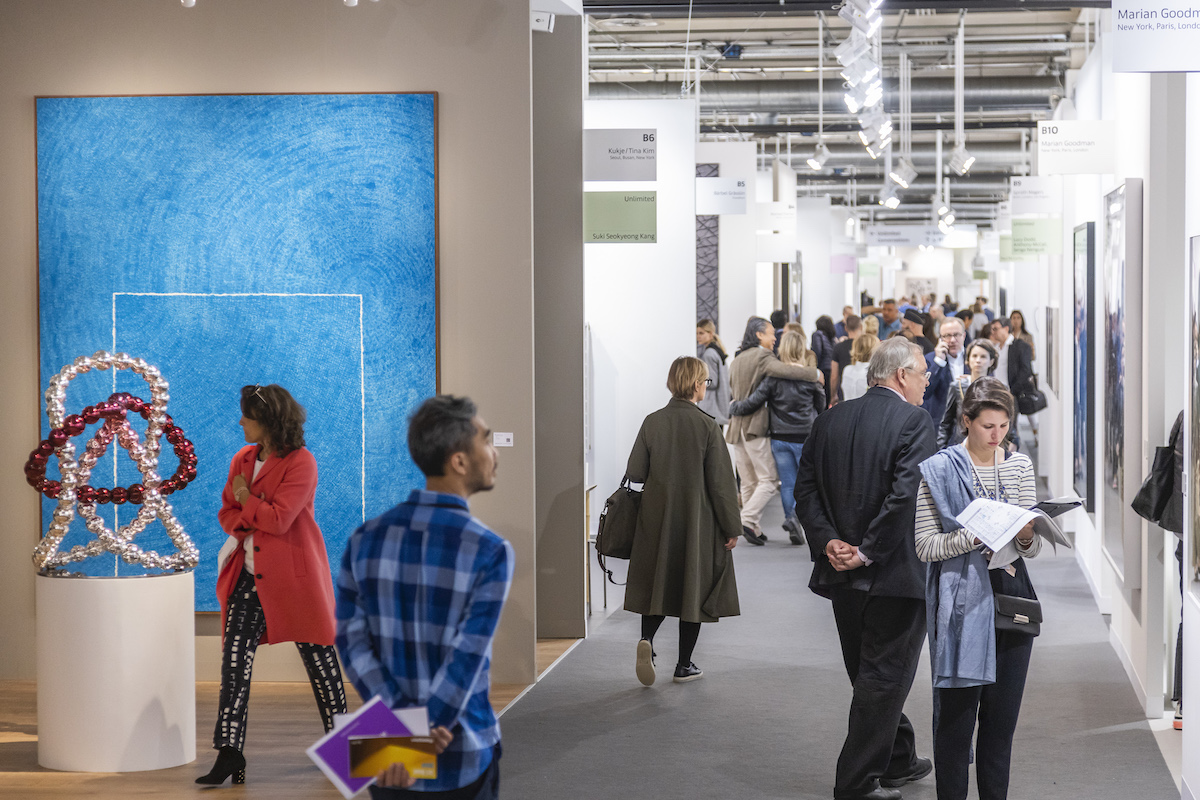Gallery Sales Drop, Online Sales Grow During Covid-19 Pandemic: Art Basel Report
Although all three editions of Art Basel have been canceled this year because of the pandemic, the fair has released its first mid-year UBS Global Art Market Report. The report, written in partnership with art economist Clare McAndrew, suggests that Covid-19 has significantly impacted the market—though not always in negative ways.
According to the report, sales have dropped overall across the global gallery sector since the pandemic began six months ago. But high net worth collectors that were surveyed for the report said they were more interested in collecting in spite of all this, and the online sector is growing as auction houses and galleries have moved their offerings digital.
The report also issues predictions for the future of the global economy. Claiming that pandemics tend to drive “xenophobia, populism, and protectionism,” the report envisions that markets across various industries will become less global.
The survey used data from 795 galleries and analyzed the collecting habits of 360 high-net-worth individuals across the U.S, the U.K., Europe, and Asia. According to the report, galleries reported sales have fallen by 36 percent in the first half of 2020, compared to the equivalent period in 2019, though the report does not provide an estimated total. According to their annual report published in February, sales in dealer sector were estimated to have reached $36.8 billion in 2019.
The gallery sector has been hit hard by the contraction in sales volume, leading to staff furloughs and layoffs at enterprises of all sizes. Of the dealers surveyed, one third reported staff downsizing. Smaller galleries with annual turnover between $250,000 and $500,000 saw the largest share of staff cuts, with roughly 38 percent reporting that they had shrunk their workforces.
In general, the pandemic has forced new habits for dealers and collectors alike. New buyers continue to be a priority for dealers, accounting for 26 percent of those online sales overall and 35 percent for smaller galleries with an annual turnover of less than $250,000. Art fairs around the world have been canceled and postponed, meaning that dealers have also had fewer opportunities to sell their art there. Sales volume through this channel fell from 46 percent in the first half of 2019 to just 16 percent in 2020. Yet the report found that, without the cost of showing at fairs, galleries were able to mitigate the loss in sales money.
Dealers add they were now most focused on online sales, reducing costs, and maintaining existing client relationships for the remaining of 2020. Accordingly, the online sector is rapidly growing. Whereas in the first half of 2019 online sales accounted for 10 percent of total sales volume for galleries, it accounted for 37 percent in the first half of 2020. The highest-grossing galleries—those with a $10 million plus annual turnover—saw the greatest increase in sales volume, with 38 percent reporting that they’d sold more art online than before. One third of collectors surveyed bought works through online sales platforms, and 81 percent said it necessary to have the price listed when viewing works online.
Contrary to fears across the industry in the beginning of the pandemic, buyers appear to have remained active. The report found that 59 percent of the collectors surveyed said the pandemic had increased their collecting interest; 70 percent of millennial collectors said they felt more inclined to buy art online now. But that didn’t mean people were spending an equivalent amount in general. A little more than half of those collectors reported spending over $100,000 on art in 2020, and just 16 percent said they spent more than $1 million.
Facing financial losses, 52 percent of galleries reported receiving and income support. Mega-dealers Gagosian, David Zwirner, Pace, and Hauser & Wirth were among the biggest market-oriented recipients of aid through the U.S. Paycheck Protection Program (PPP), each receiving relief of $1 million to $5 million, according to data released by the Small Business Administration in July. The report noted that previous surveys have revealed a lack of lending and credit available in the sector that would allow vendors to endure economic lags.
Collaboration between peer business have emerged as a favored practice during the pandemic as a means to cut marketing costs and share clients. The most prevalent were dealer-to-dealer partnerships, accounting for 78 percent of collaborative efforts. The findings coincide with the trend of leading blue-chip galleries like Hauser & Wirth and David Zwirner serving as online sales platforms for smaller contemporary galleries during the pandemic.
Signs that the pandemic will have long-lasting consequences could be here, according to the report, which said that the rise of the digital market during the crisis may lead to the slowing of brick-and-mortar retail and a further investment in e-commerce.
Published at Wed, 09 Sep 2020 07:00:06 +0000


